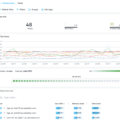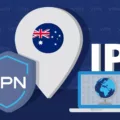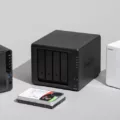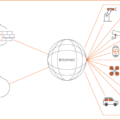Virtual patching is an important security measure for organizations of all sizes. It serves as a way to quickly protect vulnerable systems from known and unknown threats without the need to take the system offline or perform complex patching. The ability to quickly deploy virtual patches can be a critical factor in avoiding costly downtime due to malicious attacks.
Virtual patching is a process of implementing temporary security patches on systems in order to prevent attacks on known vulnerabilities. It’s typically used when an organization doesn’t have the resources or time available to thoroughly test and deploy a full patch for a given vulnerability. Virtual patching acts as a protective layer between your system and potential threats by blocking or intercepting any exploit that attempts to take advantage of the vulnerability.
The process of virtual patching begins with scanning your system for known vulnerabilities and then deploying missing patches. This can be done manually or with automated tools such as SolarWinds Patch Manager, which can scan and patch Windows-based machines with minimal user intervention. Once the patches are deployed, additional layers of security policies and rules can be implemented in order to further protect against any malicious attack attempts.
Having an effective virtual patching strategy in place provides numerous benefits:
• Reduced risk of attack – By quickly deploying virtual patches, you can reduce your risk of being attacked by known vulnerabilities while you work on more permanent solutions.
• Minimized downtime – By avoiding the need for complex testing and deployment processes, you can minimize downtime caused by malicious attacks and keep your systems running smoothly.
• Increased efficiency – Automated tools such as SolarWinds Patch Manager make it easy to scan for vulnerabilities and deploy missing patches, reducing the amount of manual labor required from IT staff.
• Improved security posture – Implementing additional layers of security policies and rules helps to further protect against potential threats before they become an issue.
• Cost savings – Since virtual patching eliminates the need for more extensive testing and deployment procedures, you save both time and money by taking this proactive approach to security.
Virtual patching is an effective way to protect vulnerable systems from known threats without having to take them offline or perform complex testing procedures. Automated scanning tools such as SolarWinds Patch Manager make it easy for organizations of any size to quickly deploy missing patches across multiple machines, increasing efficiency while minimizing downtime caused by malicious attacks.

The Benefits of Virtual Patching
Virtual patching helps to protect computer systems from attackers exploiting known vulnerabilities. It provides a quick and easy solution for admins to prevent attacks, without needing to take the system offline for lengthy updates. Virtual patching can also help detect and alert admins of any suspicious activities that could indicate a potential attack. By providing an extra layer of security, virtual patching can help reduce the risk of malicious activity, as well as the cost associated with repairing or replacing damaged systems or data.
The Best Virtual Patching Solutions
The best virtual patching solutions are those that combine automation and manual intervention to provide robust security for an organization’s systems. Our top pick for a virtual patching system is SolarWinds Patch Manager. It offers extensive capabilities for patching Windows and the software that runs on it, including scheduling, automated download, testing and installation of patches, and post-patch verification. It can even pause, investigate, or cancel queued patches as necessary.
Other great solutions include Flexera’s Software Vulnerability Manager, which provides a detailed analysis of vulnerabilities in your software and helps identify missing patches; Tenable’s Nessus Network Monitor, which monitors your network for vulnerabilities; Qualys Cloud Platform which helps you quickly identify security threats; and BeyondTrust Retina CS which helps you keep track of all the latest security updates.
No matter what solution you choose, it’s important to ensure that the system you use offers comprehensive protection through automation and manual control when necessary. This will help ensure that your organization is secure from malicious attacks.
The Benefits of Virtual Patching with Trend Micro
Virtual patching from Trend Micro is a security solution that protects organizations from threats that exploit known and unknown vulnerabilities. It works by implementing layers of security policies and rules to prevent and intercept exploits from taking network paths to and from vulnerable systems. These policies are designed to shield against malicious code, malicious scripts, ransomware, data theft, SQL injection attacks, buffer overflow attacks, cross-site scripting (XSS) attacks, and more. Trend Micro’s virtual patching solutions also provide proactive protection against zero-day vulnerabilities. This is achieved through advanced behavior analysis techniques that detect suspicious activities indicative of an attack before malicious code can be executed. With Trend Micro’s virtual patching services, organizations can quickly deploy virtual patches to protect against potential threats without having to wait for the vendor’s official security patch release.
Understanding the Zero-Day Patching Process
Zero Day patching is the process of releasing a security patch or update to address a vulnerability in software before it is known to potential attackers. This process involves security teams quickly identifying and analyzing a vulnerability, testing the patch to make sure it works, and deploying it to protect the system from malicious actors. The goal of Zero Day patching is to prevent attackers from exploiting an unknown vulnerability and gaining access to sensitive data or systems. It is important for organizations to have a comprehensive security plan in place that includes proactive measures such as Zero Day patching to ensure the safety of their networks and data.
Conclusion
In conclusion, virtual patching is an important security measure that can help protect against known and unknown vulnerabilities. It involves implementing layers of security policies and rules to prevent and intercept exploits from taking network paths to and from a vulnerability. SolarWinds Patch Manager is one of the best virtual patching systems available, with extensive capabilities for patching Windows and the software that runs on it. It provides a high degree of automation while still allowing manual intervention when necessary. Overall, virtual patching is an important tool for keeping systems and networks safe from threats, making it an essential part of any organization’s security strategy.








